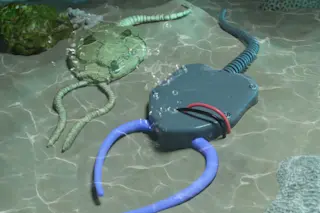Having a bee brain might not be so bad after all, since new research shows that bees are faster than supercomputers when it came to solving one of those dreadful "word problems" from (probably very advanced) high school math class. Co-author Mathieu Lihoreau explained the significance of this discovery in a press release:
"There is a common perception that smaller brains constrain animals to be simple reflex machines. But our work with bees shows advanced cognitive capacities with very limited neuron numbers."
The problem is called the traveling salesman problem
, and the bees' lives actually depend on solving it every day. The traveling salesman needs to visit a number of cities in the shortest amount of time, without repeating a visit. The traveling bumblebee needs to visit a number of flowers everyday, while expending as little energy as possible. Queen Mary University of London researcher Lars Chittka
explained in ...














